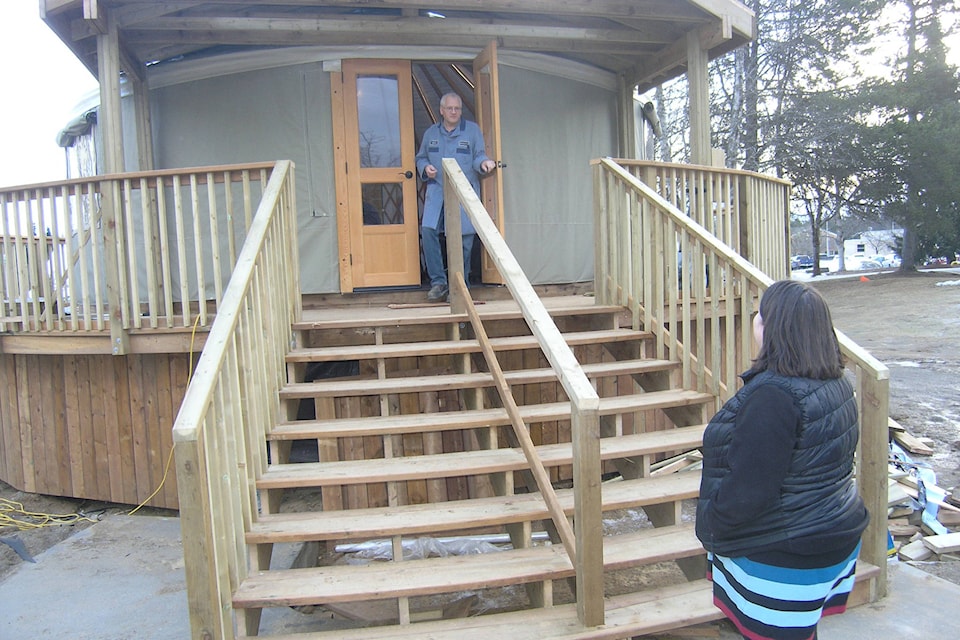King Arthur had his Round Table and William Shakespeare his theatre-in-the-round Globe building in London, England.
And now Northwest Community College has its own circular architectural structure – a modernized version of a yurt, the traditional tent used as living quarters by nomadic Mongolians.
Just finished and already in use, the yurt sits atop a wooden platform and is located on the college’s Terrace campus between the main administration building and the cafeteria building.
It’s the most visible sign to date of a shift in how the college offers its wide variety of courses and programs.
Carrie Nolan, the college’s dean of its Centre of Learning Transformation offers up a succinct explanation: “What is going to help our students learn.”
Because of its circular interior, the yurt takes away the traditional square classroom of neatly lined up desks with an instructor at the front of the class.
Instead students are at an equal with the instructor in a circle, allowing more intimate and immediate contact and discussion.
That means, for instance, there’s no hiding in the back of a room.
Nolan doesn’t call the 452 square foot yurt interior a classroom and instead refers to it as a learning lab.
That’s because each instructor and each class experience can lead to unintended consequences.
“One instructor told me things took place she didn’t expect,” said Nolan of a early childhood education class which had booked the yurt for a session.
Chairs inside the yurt are on wheels so they can be easily shifted and a $13,000, 80-inch screen displays material at a touch of a computer screen.
So far Nolan’s not aware of any other Canadian post-secondary institution installing a yurt intended to be a focal point for instruction and student learning.
As such, the yurt follows on the college embedding what Nolan calls “experiential place-based learning”.
“Instead of telling students about a glacier, take them to the glacier,” Nolan said.
Culinary arts students, Nolan continued, can hone their skills in the community by preparing food at a local community agency’s building.
That kind of learning experience given the opportunities and circumstances which exist in the northwest has driven the college’s strategic plan to make it an attractive and practical place for student education and experience.
The yurt itself comes from an Oregon company and was set up late last year on a wooden platform by local company Tongue and Groove Construction. The covering is a weather-resistant acrylic-type material stretched over a wooden frame and services for heat, light and communications run up from the platform into the interior. There’s a skylight at the peak.
Its purchase price was $17,000 with all-in installation and furniture and technology costs to date amounting to $63,000.
Of that amount, $38,000 came from within the college’s budget while $25,000 for fixtures and furniture coming from a provincial program.
Nolan said the price is a cost-effective way of adding a classroom space.
While the yurt is the first of its type at the college’s Terrace campus this is not the first time the college has reached out of traditional buildings for its students.
Several years ago, in response to the need for student housing, it purchased and set up mobile living quarters which also simulate the kind of work-camp experience common on large-scale construction and remote industrial projects.
